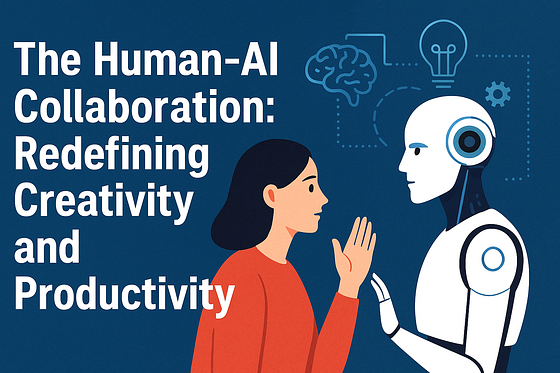The Human-AI Collaboration: Redefining Creativity and Productivity

In today’s rapidly evolving digital landscape, the collaboration between humans and artificial intelligence (AI) is no longer a futuristic concept — it’s happening now. Businesses, creators, and professionals are discovering that combining human intuition with AI-driven insights can unlock unprecedented levels of creativity and productivity. This partnership is transforming the way we work, make decisions, and innovate.
Understanding Human-AI Collaboration
Human-AI collaboration is the process of leveraging AI technologies to enhance human capabilities rather than replace them. While AI excels at processing large amounts of data, identifying patterns, and automating repetitive tasks, humans bring empathy, creativity, and critical thinking to the table. By merging these strengths, organizations can achieve more efficient workflows and innovative solutions.
For instance, in creative industries like design, marketing, and content creation, AI tools can generate ideas, analyze trends, and optimize workflows, allowing humans to focus on strategic decision-making and imaginative problem-solving. Similarly, in business operations, AI-driven analytics can provide insights into consumer behavior, operational inefficiencies, and market opportunities — insights that humans can then act upon with nuance and context.
Benefits of Integrating AI into Workflows
- Enhanced Productivity: AI can automate routine tasks such as data entry, report generation, and customer service queries, freeing up time for humans to focus on complex, high-value work.
- Boosted Creativity: Tools like AI-powered design platforms and content generators enable professionals to explore multiple creative directions quickly, sparking innovation without compromising quality.
- Data-Driven Decision Making: AI analyzes vast datasets far beyond human capacity, helping teams make informed decisions, predict trends, and reduce errors.
- Scalability: Businesses can scale operations more efficiently by leveraging AI for repetitive tasks, while humans focus on strategic growth and customer engagement.
The Role of AI Consulting
Successfully implementing AI requires more than just deploying tools; it demands strategic planning and expertise. This is where AI consulting plays a vital role. AI consultants guide organizations in identifying the right technologies, integrating AI into existing workflows, and ensuring that human-AI collaboration is effective and sustainable.
For example, a company may have access to AI-driven analytics but struggle to interpret the data for actionable insights. With AI consulting, experts can bridge this gap, helping teams understand the outputs, refine strategies, and maximize both human and AI contributions.
Real-World Examples of Human-AI Collaboration
- Marketing and Content Creation: AI-powered platforms analyze audience engagement patterns and suggest personalized content strategies. Human marketers then craft messages with emotional resonance and storytelling impact.
- Healthcare: AI assists in diagnosing diseases by analyzing medical images or predicting patient risks. Doctors combine these insights with their experience to make precise, empathetic decisions.
- Product Design: AI tools simulate thousands of design variations based on performance criteria. Designers then choose and refine concepts, ensuring functionality and aesthetics align with user needs.
Read More: The Human-AI Collaboration: Redefining Creativity and Productivity



Comments
Post a Comment